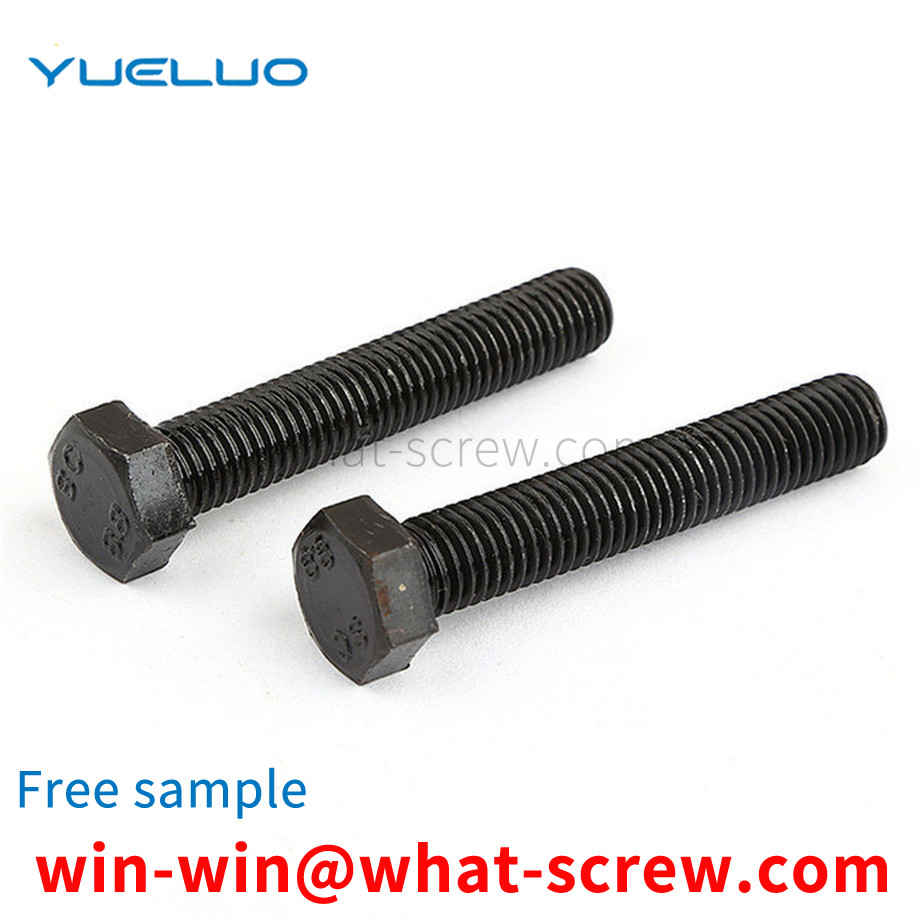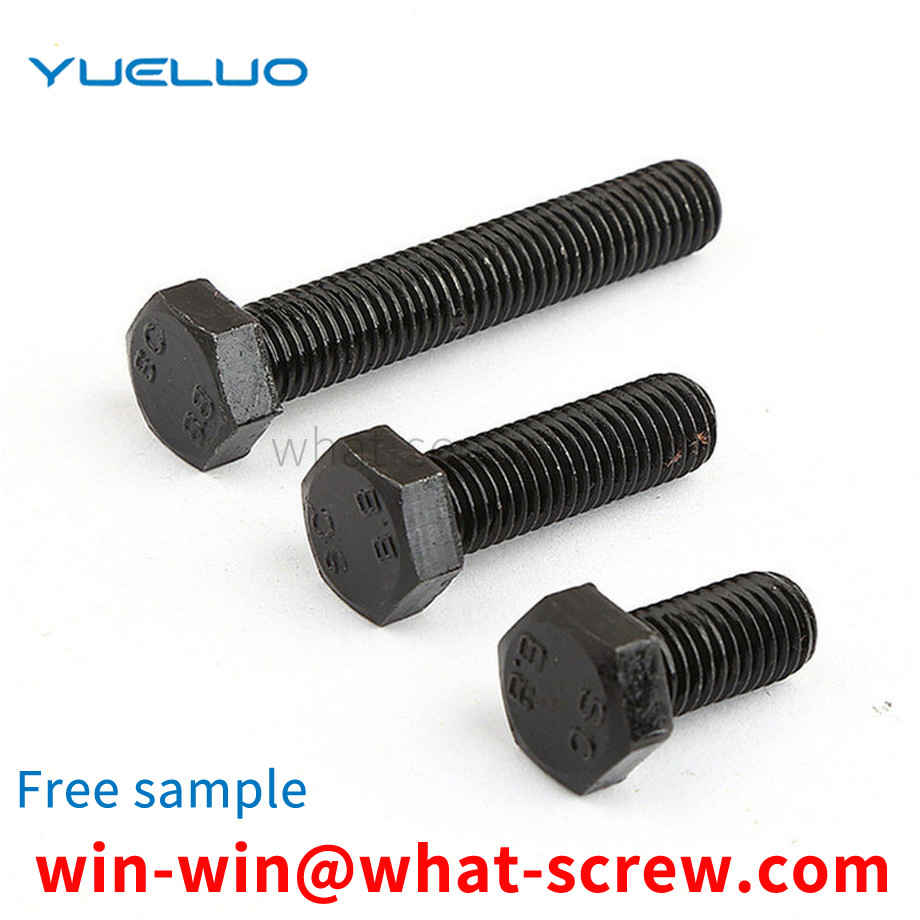Fasteners play a very important role in the installation of the main engine. Complex products such as airplanes, automobiles, trains, elevators, air conditioners, and computers all have the problem of installing components on thin plates. There are two traditional installation processes. One is The first is to tap the internal thread on the thin plate, but when the internal thread is tapped on the thin plate below 6 mm, the installation is often not firm because the number of threads is too small, and even the connection fails due to the broken thread when the force is applied; the second way It is a process of welding nuts on a thin plate, which easily leads to deformation of the thin plate and uneven welding surface. Sometimes the welding is not strong and the nut falls off when the force is applied, resulting in damage to the installation. The development of rivet nuts has solved the problem of installing components on thin plates, because rivet nuts combine the characteristics of nuts and rivets, and play an increasingly important role in fastener products. However, with the extensive use of rivet nuts in the electromechanical and mechanical industries such as automobiles, aviation, railways, refrigeration, elevators, etc., ordinary rivet nuts can no longer meet the special assembly requirements of many mechanical and electromechanical products, such as good sealing during assembly. Rivet nut with leak-proof function. Cantonese snail
A T-shaped grounding bolt comprises a connection platform, a hexagonal bolt is welded below the described connection platform, and the lower surface edge of the described connection platform is provided with a barb.
total of 13 domestic automotive fastener companies were interviewed and investigated in this survey, and all the companies under investigation have passed the TS16949 system certification. An average car has about 1500 fasteners, and the total bolt assembly time for each car is about 2.5~3.2h. It can be seen that the variety and quality of fasteners have an important impact on the level of the main engine and the quality of the vehicle. This article analyzes the localization of high-strength threaded fasteners and the management of supply quality from the perspective of the production process of high-strength threaded fasteners. Product flow of high-strength threaded fasteners The production process of high-strength threaded fasteners is raw material transformation → cold heading forming → thread processing (thread rolling or thread rolling) → heat treatment → surface treatment → sorting and packaging, generally used above grade 10.9 Thread rolling process after heat treatment. The steel grades commonly used for high-strength bolts of automotive fastener materials are 35 steel, 45 steel, and ML35 steel for grade 8.8 bolts; 35CrMo for grade 10.9 bolts; 40Cr; 35CrMo, 42CrMo, and SCM435 for grade 12.9 bolts. The raw materials for domestic fasteners are basically in the hot-rolled state, while the steel for fasteners produced in Japan and other countries is basically in the state of direct cold heading. Users do not need pretreatment, which can reduce costs from the link. Common failure modes of fastener failure are assembly elongation, fatigue fracture, and delayed fracture. In addition to the material, the quality of cold heading forming and thread processing (thread rolling or thread rolling, tapping) threaded fasteners, forming equipment and thread processing equipment and molds (production process and equipment) are the key factors to ensure their quality. Especially in the state of large-scale and multi-variety supply, automotive fasteners that require high machining accuracy, how to ensure product consistency and defect prevention is one of the problems faced by fastener production. For the cold heading equipment and thread processing equipment of the investigated companies, domestic equipment accounts for about 40%, Taiwan equipment accounts for 50%, and imported (Europe, America, Japan) equipment accounts for about 10%; Partial folding, thread streamline upsetting, tooth wrinkles and cracks, etc. Domestic fastener factories are limited by capital or other reasons, and most of them use domestic equipment and Taiwan equipment to produce fasteners for automobiles. To ensure the dimensional tolerance and geometric tolerance of large-scale production of high-end fastener products, online monitoring should be increased. Means and mold making level. Eliminate unqualified products in production, so as to ensure the assembly quality of OEMs and OEMs. [1] About 80% of the surveyed fastener enterprises have heat treatment equipment, and most of them use Taiwan heat treatment process lines; the process line equipment is a continuous mesh belt furnace with atmosphere protection, and the atmosphere, temperature and process parameters are controlled by a computer. The high-strength fastener industry is a relatively competitive industry. If we want to have a thorough and objective analysis of the technology and market of the high-strength fastener industry, we need to start from the following aspects: domestic high-strength fasteners Industry and Enterprise Competition Pattern High-strength Fastener Industry Industrial Policy High-strength Fastener Product Technical Standards and Regulations my country's High-strength Fastener Product Technology Competition Pattern Dynamics Regarding these six aspects, many domestic research institutions have conducted in-depth research and research, and many institutions have long been engaged in research and research in this industry.
Currently, the method of fixing objects on cement is with cement nails or expansion screws. Cement nails are objects made of hard alloy steel that look like iron nails, which are composed of nail tips and nail bodies. Cement nails are hammered into the cement. Cement nails are easy to drive in, but not removable. The expansion screw is composed of a large end screw, a slotted sleeve, a gasket, a spring washer, and a nut. When using, first drill a hole in the cement with an electric hammer, put in the expansion screw, and tighten the nut to make the slotted sleeve expand at the tail of the big tail screw, so as to fix the expansion screw on the cement. At this time, unscrew the nut to install a fixed object on the expansion screw. Although this method can be disassembled, an electric hammer is required for the first installation, which is inconvenient.
Most of the electroplating used for rivet nuts on the market is environmental protection blue zinc, because the salt spray test time of environmental protection blue zinc can reach 72 hours, that is, three days. This kind of electroplating has a longer salt spray resistance time. In fact, for example, for electroplating white nickel, the salt spray time of white nickel is relatively short, and it usually rusts in a few hours, which is less than 10 hours. However, some can be oiled for electroplating white nickel, and the salt spray time of the rivet nut after oiling can be longer. S series rivet nuts are made of free-cutting iron, which is treated after heat treatment. CLS series rivet nuts are made of easy-to-cut stainless steel. The hardness of low-carbon steel plates without surface treatment must be less than 70RB, and the hardness of stainless steel plates must be less than 80RB.
We have many years of experience in the production and sales of screws, nuts, flat washers, etc. The main products are: natural aluminum alloy round long nuts, Phillips round bolts, self-tapping screws in combination sets, external serrated anti-skid washers and other products, we can provide you with The right fastener solution for you.



















 Service Hotline
Service Hotline




